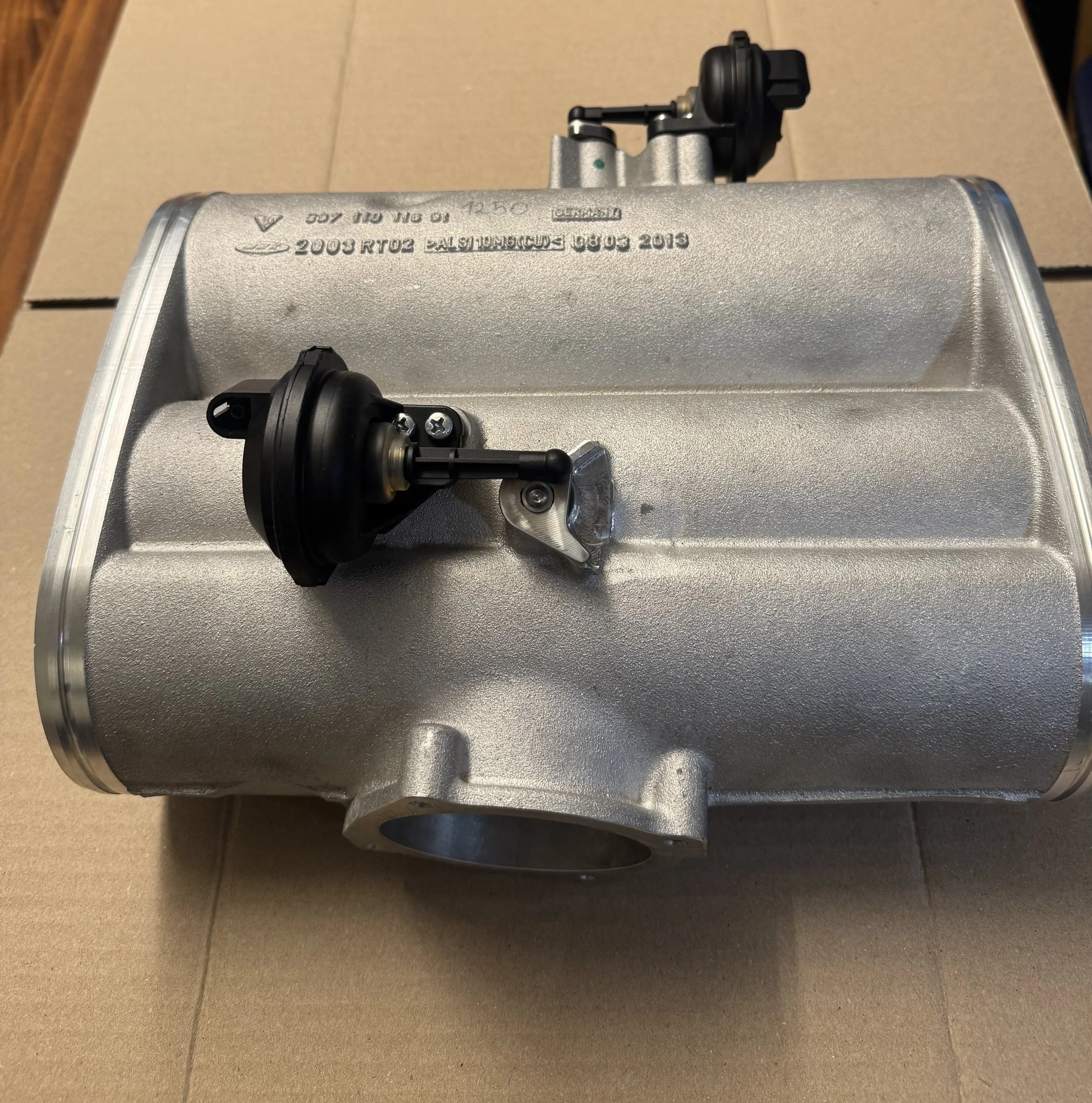The Process
Phase 1: Learning from Later-Generation Designs
We began by analyzing the evolution of the intake manifold components in the 991 GT3 RS and 718 GT4/Spyder platforms. These later-generation Porsche models featured updated design philosophies intended to improve durability and performance under repeated high-load conditions. We extracted the core principles—stress minimization through geometry refinement—and adapted them to fit the architecture of the 997’s aluminum intake housing.
Key enhancement: We eliminated all stress concentrators, such as sharp transitions and undercut regions, which are the leading cause of fatigue crack initiation in the OEM 997 design.
Phase 2: Materials Engineering & Structural Upgrade
To understand the root cause of failure in the OEM system, we conducted a cross-generational materials study. Our teardown analysis confirmed that the original Porsche rod used a low- to medium-carbon steel (likely 1020 or 1040)—a cost-effective but fatigue-prone material for this high-cycle environment.
Our solution involved two targeted material upgrades:
Rod:
Replaced with 17-4 PH precipitation-hardened stainless steel, an aerospace-grade alloy known for:Exceptional fatigue strength
Stress-corrosion resistance
Dimensional stability under repeated thermal cycling and resonance loading
Flap:
Replaced with Ultem 1000 (polyetherimide), a high-performance thermoplastic used in aerospace, chosen for its:High heat resistance and mechanical rigidity
Long-term fatigue endurance
Resistance to deformation, cracking, and chemical exposure in intake environments
Together, this rod-and-flap system eliminates the key vulnerabilities of the OEM design—addressing both metallic fatigue and polymeric aging in one complete solution.
Phase 3: Dimensional Reinforcement for Greater Strength
Recognizing that fatigue life is highly sensitive to cross-sectional area, we increased the rod diameter by 25%, which reduces bending and axial stress under load cycles. This change alone yields a theoretical 44% reduction in stress, assuming similar loading conditions, thereby extending the fatigue life even further.


